“Unbelievable Discoveries: 10 Fascinating Archaeological Finds”
Top10 Fascinating Archaeological Finds
Join us as we reveal ten of the most Fascinating archaeological finds in human history as we take you on an enthralling journey through time. These discoveries, which include ancient civilizations and undiscovered treasures, offer tantalizing hints at the mysteries that have captivated archaeologists all around the world and offer a window into our history. In our most recent blog article, learn more about the artifacts, revealed secrets, and narratives underlying these astounding revelations.
Easter Island Moai: Mysterious Stone Statues of Polynesia
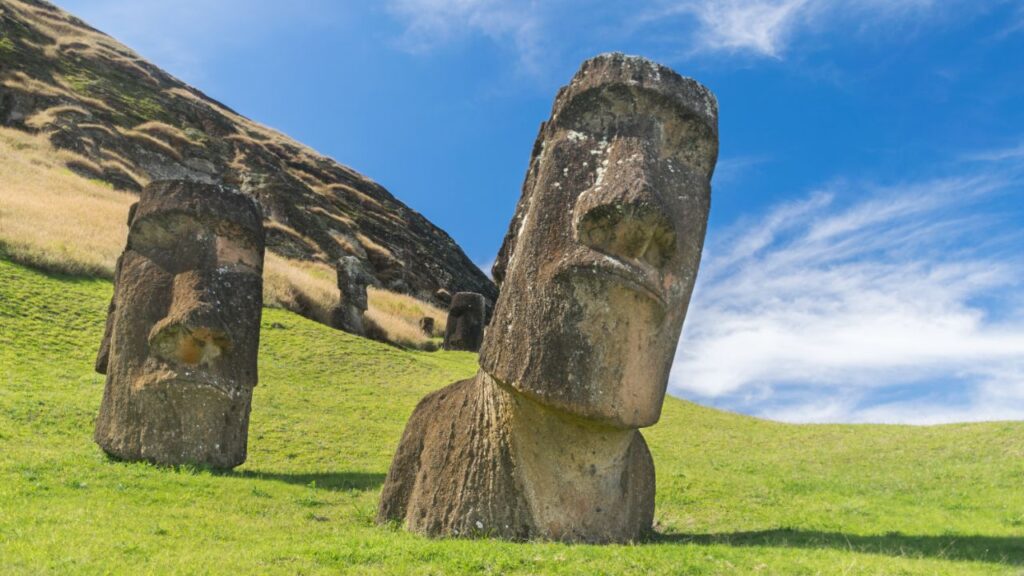
There is a group of over 1,000 monolithic statues on Chile’s Easter Island (Rapa Nui to the locals). Which is located in the southeast Pacific Ocean. These erect, human-like figures are carved by experienced artisans, typically from volcanic tuff, and have huge heads and stylist, angular faces with protruding noses, ears, and lips. It is thought that at important occasions, their eye sockets would have been filled with red and white stones. The moai weigh up to 80 tons and range in height from 6 to 30 feet; many of them were never completed.
Although there is still much to learn about the moai statues. Experts believe they were constructed between 400 and 1500 CE to pay homage to native ancestors. Almost all of the statues look inland, guarding and guiding the islanders. The mythology claims that seven of them, representing a group of islanders who kept an eye out for approaching ships, face outward toward the ocean.
The statues’ location, Rapa Nui National Park, was designated a UNESCO World Heritage Site in 1996. Officials are still evaluating the damage after a recent volcanic outburst caused a fire that severely burned several of the Moai.
Terracotta Army: China’s Astounding Subterranean Legion
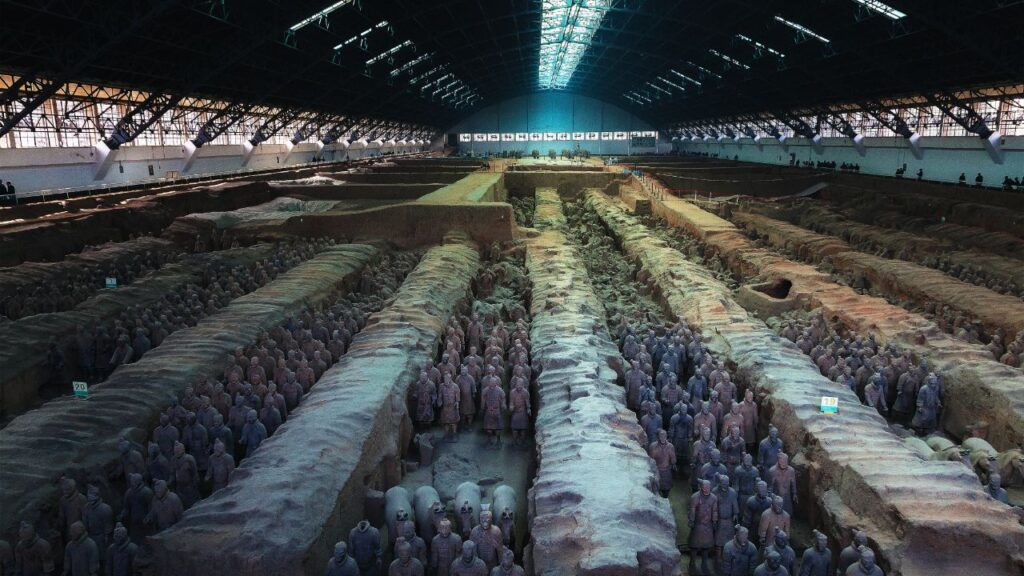
Cast your gaze upon the monumental discovery that rocked the archaeological world in 1974. The terracotta army of Qin Shi Huang, China’s first emperor (259 B.C. – 210 B.C.). Unearthed by local farmers, this extraordinary assemblage of clay soldiers, along with chariots and horses, stood as guardians destined to protect the emperor in the afterlife. But that’s not all—the site also revealed other terracotta figures, including acrobats and musicians, buried alongside the revered ruler.
Nestled underground near the city of Xi’an, within China’s Shaanxi province. This incredible gathering of ancient figures lies within a stone’s throw from the pyramid-shaped mausoleum of the first emperor. However, the emperor’s final resting place remains unexplored, waiting to be explored. Expert opinions envision an opulent tomb encompassing a staggering replica of Xi’an. A sprawling expanse of 38 square miles (98 square kilometers), adorned with a network of waterways, mountains, and hills.
Although scientists have utilized remote sensing and radar devices to gain insights into this subterranean metropolis, concerns about health have barred them from breaching its mysterious depths. Accounts penned centuries ago allude to faux rivers coursing with toxic mercury. A notion supported by elevated mercury levels in the soil surrounding the tomb, lending credibility to these ancient chronicles.
King Tut’s Tomb: The Treasures of an Egyptian Pharaoh
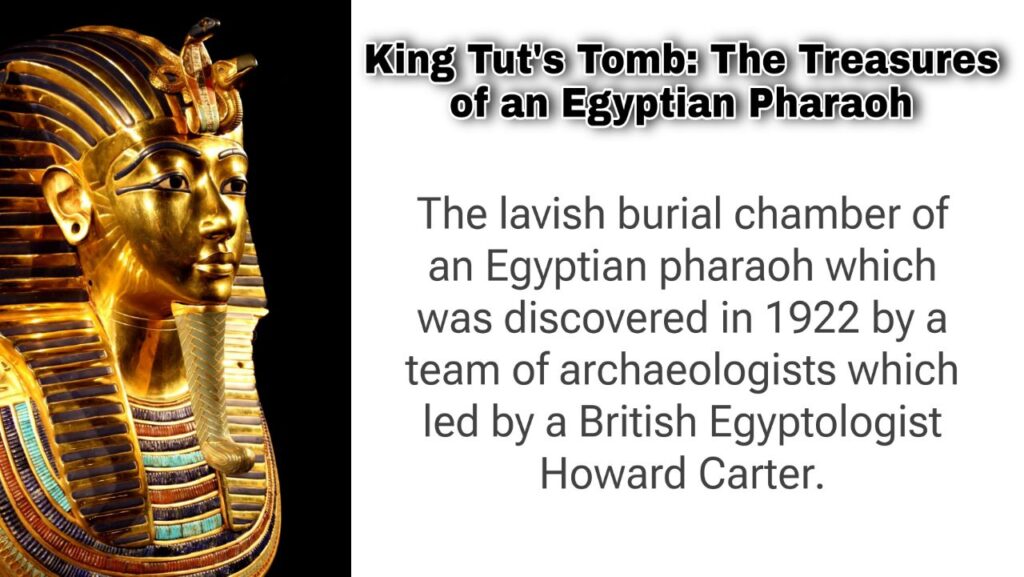
King Tutankhamun’s tomb, sometimes called King Tut. The lavish burial chamber of an Egyptian pharaoh which was discovered in 1922 by a team of archaeologists which led by a British Egyptologist Howard Carter.
Tutankhamun assumed control in the year 1332 B.C At the age of 9 and passed away nine years later. His sudden demise could be the reason the boy pharaoh’s tomb seems like it was built quickly. According to experts, microbes discovered on the tomb’s walls indicate that the paint on the walls was not even completely dry when the tomb was shut.
Carter and his team were met with a variety of valuables when they first entered pharaoh Tut’s tomb. Including two “ebony-black” effigies of the pharaoh and a variety of gold-covered couches that were carved into the forms of exotic animals. The tomb’s contents were so amazing that Carter and his team helped keep them safe from grave thieves. By spreading the legend that anyone who entered the tomb would be cursed by the deceased king. But despite the rumored curse, archaeologists are still poking around the famous burial chamber almost a century later.
Also Read : Top 6 Scariest Exoplanets in the Universe: Worlds of Cosmic Horror
Machu Picchu: The Lost City of the Incas
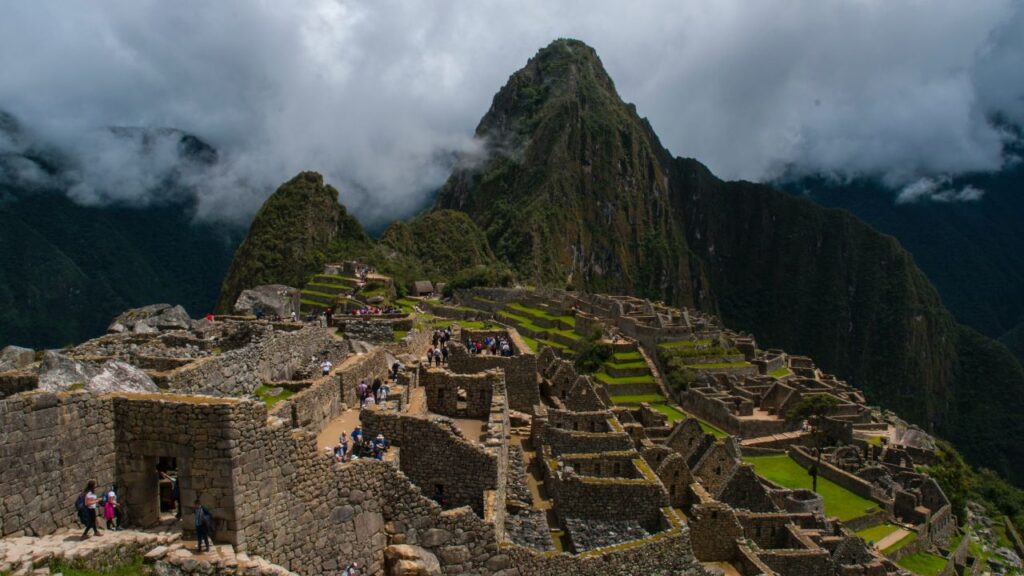
Machu Picchu is a Peruvian Inca site from the 15th century that is perched high on a mountainside. It is one of the most visited archaeological sites in the world. In 1911, the location was once again found by the late Yale University professor Hiram Bingham III. The ancient structures were extraordinarily well maintained since, up until that point, Spanish conquistadors and settlers had not noticed them.
Many archaeologists think Pachacuti Inca Yupanqui, a 14th-century Inca king, originally owned Machu Picchu as his royal domain. The vast complex, which comprises walls, terraces, homes, and a number of temples. Extends over an area of around 126 square miles (326 square kilometers).
Lascaux Cave: Paleolithic Art Preserved for Millennia

Four lads were having fun in the woods near Montignac, France, in September 1940 when their dog fell into a hole. It turned out the hole was the entrance to a cave. Unknowingly, the friends had come across the best surviving example of Paleolithic cave art in Europe. Although the Vézère valley alone has 25 decorated caves, the range and caliber of the paintings at Lascaux are unmatched.
About 600 paintings and 1,500 engravings are found at Lascaux, which is composed of several interconnected chambers. The majority of the photographs include animals. The Great Hall of Bulls, which is dominated by four enormous animals up to 18 feet (5.4 meters) long, contains the most impressive examples. The artworks’ intended function has been hotly contested. Since several are in places where they could never have been adequately viewed. It appears that their purpose was religious rather than decorative.
The cave was found during the war, delaying a thorough exploration of the area, but it was eventually made public in 1948. It attracted record crowds, which quickly turned into a problem. The photographs significantly deteriorated as a result of the visitors’ breath humidity as well as the dirt and pollen on their shoes. In 1963, the cave was sealed off, and a replica was built inside a reinforced concrete shell. When Lascaux II was opened in 1983, it immediately became as well-liked as the first. By Iain Zaczek.
Pompeii: A Roman City Immortalized in Ash

In the year 79 A.D., Mount Vesuvius erupted. Unleashing a deadly ash and gas haze that covered the Roman city of Pompeii. Tragically, many couldn’t escape, and the city was buried under 19 to 23 feet (6 to 7 meters) of pumice stone and ash.
Pompeii remained hidden for centuries until the late 16th century when an architect named Domenico Fontana stumbled upon its beautifully adorned walls. This discovery sparked curiosity, and in the 18th century, more excavations took place, revealing the remains of Herculaneum, a neighboring town that suffered the same fate. The secrets of Pompeii and Herculaneum continue to captivate us today. Soon after, Pompeii herself was purposefully unearthed, becoming an enduring attraction for travelers and a testament to a bygone era. Today, the Naples National Archaeological Museum proudly displays numerous artifacts salvaged from this extraordinary site.
Dead Sea Scrolls: Ancient Manuscripts Unveiling Biblical Secrets
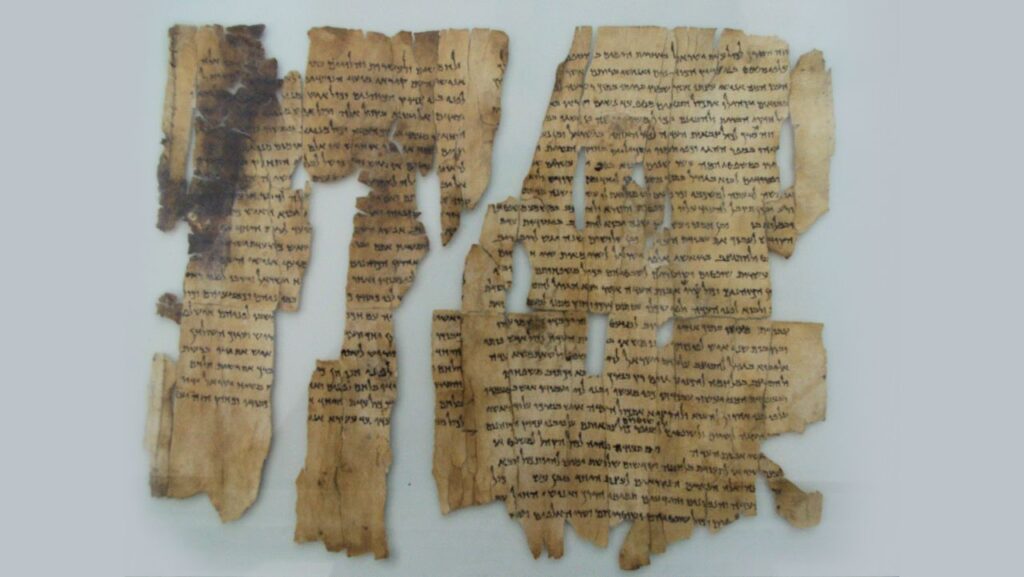
In the 1940s, a young shepherd named Muhammed Edh-Dhib stumbled upon an astonishing find while in search of a stray goat near Khirbet Qumran—an ancient site situated near the Dead Sea in the West Bank. The initial discovery consisted of seven scrolls concealed within a ceramic jar, hidden deep within a cave. Subsequently, researchers and public officials unveiled more than 900 additional manuscripts, scattered across 11 nearby caves, as detailed by the Israel Antiquities Authority. Copies of Genesis, Exodus, Isaiah, Kings, and Deuteronomy were among the riches, along with hymnals, calendars, and psalms.
Notably, portions of the Hebrew Bible can be found in several of these ancient works that are among the earliest versions we know of. Preserved in Jerusalem, with select scrolls showcased at The Shrine of the Book—a captivating wing of the Israel Museum—the Dead Sea Scrolls stand as a testament to the enduring legacy of biblical texts.
Troy: Revealing the Legendary City Immortalized by Homer
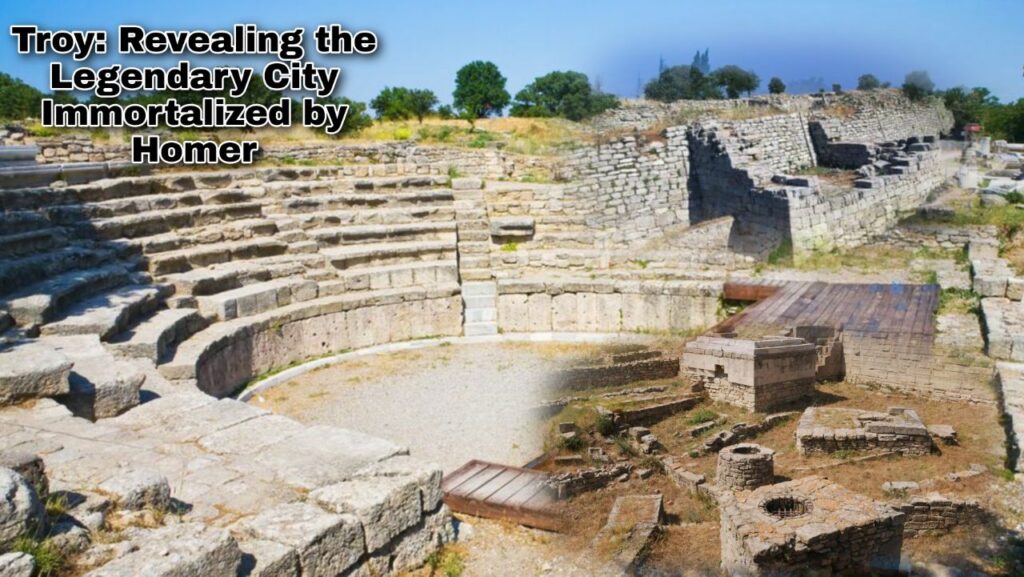
Few archaeological sites rival the enigma surrounding Troy. The ancient city that, according to Homer’s “Iliad,” bore witness to the legendary Trojan War between the realms of Troy and Mycenaean Greece. Yet, scholarly debates persist, questioning the historicity of this epic conflict and even challenging the site identified by many as the ancient Troy.
Nestled upon the northwest coast of Turkey, the city is believed to have flourished at a locale known as Hisarlik. Anchored in thousands of years of history and mythology, this particular site gained global prominence in the early 19th century. Thanks to the renowned archaeologist Heinrich Schliemann. Schliemann’s painstaking excavations at Hisarlik unearthed a trove of treasures that he boldly attributed to King Priam. The fabled ruler of Troy during the era of the Trojan War.
While conclusive proof of Hisarlik’s status as the Troy of legend eludes us, one fact remains indisputable. The site witnessed the ebb and flow of human civilization for millennia. Spanning from 3,000 B.C. to A.D. 500, Hisarlik stood witness to at least 13 distinct cities. Each erected atop the vestiges of its predecessor, as pieced together by dedicated archaeologists. A testament to the enduring spirit of exploration and the quest for understanding our past.
The Rosetta Stone: The Key to Decoding Ancient Egyptian Hieroglyphs
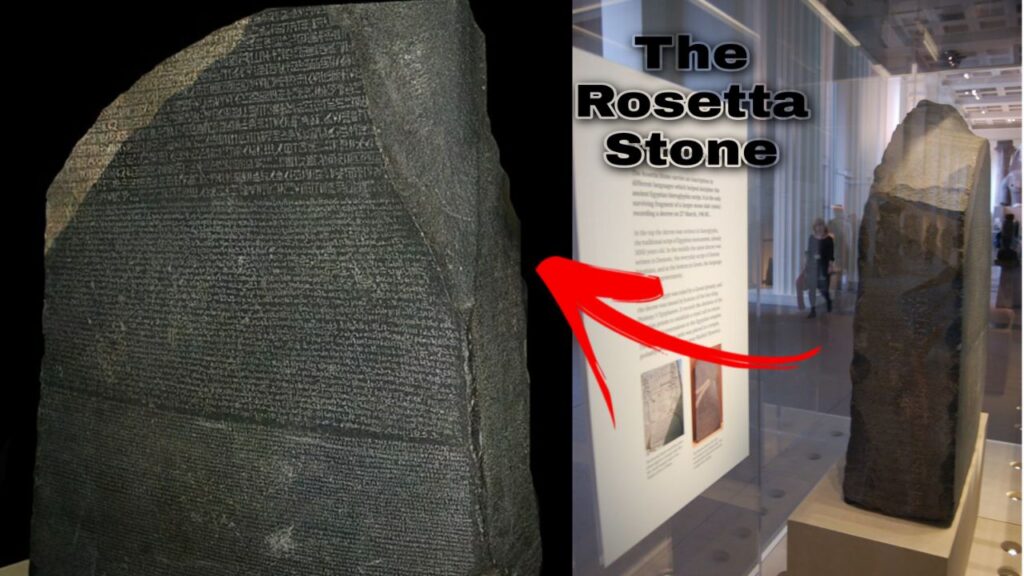
Step into the realm of wonder as we unveil the astonishing story behind the Rosetta Stone. This incredible stele, aged 2,200 years, emerges as a fragment of a larger slab carrying a decree issued by a council of priests in 196 BCE. Its purpose? To lend support to the young Ptolemy V, a mere 13 years old, on the auspicious first anniversary of his ascension to the throne. But what makes this stone truly extraordinary is its inscription, featuring hieroglyphs, cursive Egyptian script, and the familiar ancient Greek. The convergence of these three languages paved the path for scholars to unravel the enigmatic hieroglyphs, leveraging their knowledge of the other two.
The Rosetta Stone, crafted from granodiorite, a kin to the mighty granite, saw the light of day in 1799. It was unearthed by soldiers from Napoleon’s army, engaged in excavating the foundations of a fort near the enchanting town of Rashid, also known as Rosetta. Nestled in the Nile River delta of northern Egypt. This invaluable artifact found its way into the British Museum in 1802, following a treaty signed during the Napoleonic Wars.
Although it stands as a treasured gem in the museum’s collection, fervent efforts persist to this day, advocating for its repatriation to Egypt, igniting ongoing discussions.
Stonehenge: Decoding the Mystery of Megalithic Monument
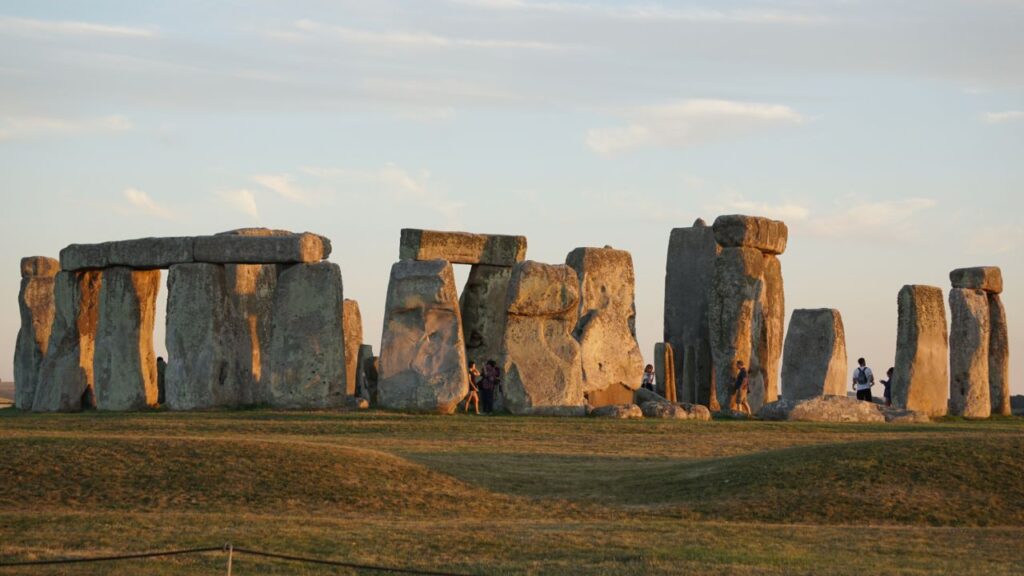
One of the most popular sites in the world, the prehistoric structure known as Stonehenge brightens an otherwise dull English countryside.
Prehistoric people who built the ring of megalithic stones about 4000 years ago. It was the most remarkable achievement for them as all archaeologists known for sure. None of the theories regarding Stonehenge’s initial use. Which vary from an astronomical observatory to a religious temple of healing, has ever been, well, set in stone.

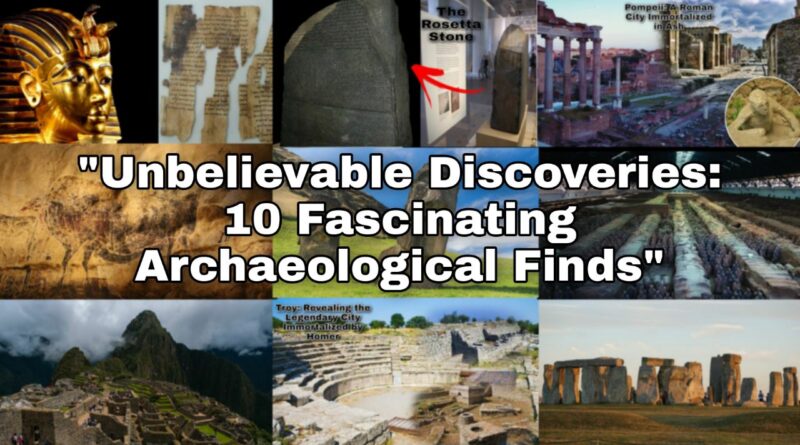



Pingback: "Adolf Hitler" - Top 12 Interesting Facts – ItsFactDude
Pingback: Top 10 Strangest Unsolved Mysteries of All Time – ItsFactDude